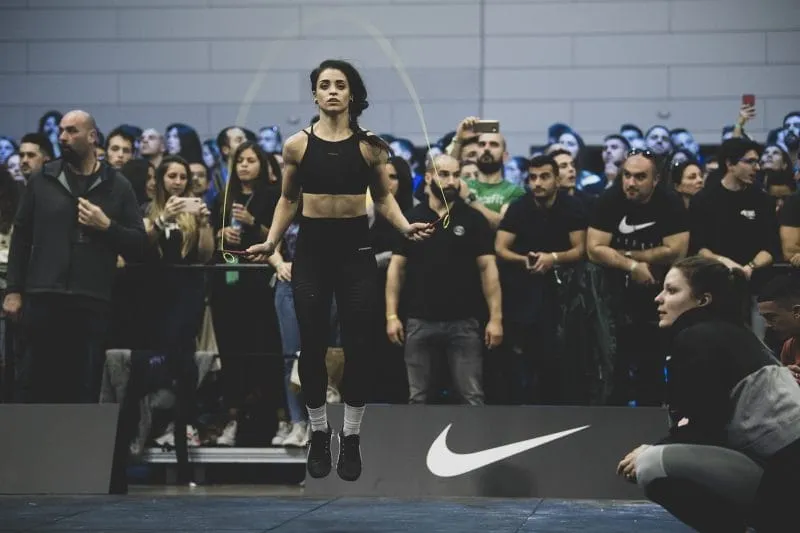Aerobic exercise stands as a cornerstone of fitness, offering myriad benefits for both physical health and longevity. Its prowess in incinerating stubborn body fat while fortifying the heart and lungs cannot be overstated.
In a world where sedentary lifestyles threaten well-being, integrating aerobic exercise into our routines emerges as an essential strategy for combatting obesity, reducing the risk of chronic diseases, and enhancing overall vitality.
Aerobic exercise, also known as cardio, encompasses activities that elevate the heart rate and stimulate the cardiovascular system. Engaging in regular aerobic exercise prompts the body to utilize stored fat as fuel, leading to reductions in body fat percentage over time. This not only contributes to a leaner physique but also mitigates the risk of obesity-related complications such as type 2 diabetes, hypertension, and cardiovascular disease.
Moreover, research consistently highlights the correlation between aerobic exercise and longevity. Studies show that individuals who engage in regular cardiovascular activity tend to live longer, healthier lives compared to their sedentary counterparts. Aerobic exercise bolsters the immune system, improves circulation, and enhances overall cardiovascular function, thereby reducing the likelihood of premature mortality.
In this article, we explore ten exhilarating forms of aerobic exercise that not only torch body fat but also infuse joy and excitement into your fitness journey. From invigorating runs along scenic trails to dynamic dance routines that ignite your passion for movement, there’s something for everyone eager to reap the rewards of cardiovascular activity. Each section delves into the unique benefits, techniques, and safety considerations associated with these diverse forms of aerobic exercise, empowering you to embark on a fulfilling quest toward improved health and vitality.
Let’s dive into the exhilarating world of aerobic exercise and discover how these ten fun activities can transform your body and enrich your life.
1. Running
Running or jogging is a timeless aerobic exercise that offers a multitude of benefits for both fat burning and cardiovascular health. As a high-impact activity, running elevates the heart rate, effectively burning calories and promoting weight loss. Its dynamic nature engages multiple muscle groups, including the legs, core, and upper body, leading to increased muscle tone and improved overall fitness.

One of the key advantages of running is its capacity to enhance cardiovascular health. Regular running strengthens the heart muscle, improves circulation, and lowers blood pressure, reducing the risk of heart disease and stroke. Additionally, running stimulates the release of endorphins, neurotransmitters that promote feelings of well-being and reduce stress, thereby supporting mental health and emotional well-being.
Tips for Beginners
For beginners embarking on their running journey, it’s essential to start slowly and gradually increase intensity and duration over time. Here are some tips to help you get started:
Invest in supportive running shoes that provide adequate cushioning and stability to minimize the risk of injury.
Begin with a brisk walk and gradually incorporate short intervals of running. Aim for a mix of running and walking to build endurance and prevent overexertion.
Pay attention to your posture and stride. Maintain an upright posture, relax your shoulders, and land softly on your feet to reduce impact.
Start with shorter distances and gradually increase your mileage as your fitness improves. Listen to your body and avoid pushing yourself too hard, especially in the beginning stages.
Incorporate rest days into your training schedule to allow your muscles to recover and prevent overuse injuries.
Safety Considerations
While running offers numerous health benefits, it’s essential to prioritize safety to prevent injury and ensure a positive experience. Here are some safety considerations to keep in mind:
- Warm up before your run with dynamic stretches to prepare your muscles for activity and reduce the risk of injury.
- Stay hydrated by drinking water before, during, and after your run, especially in hot weather.
- Pay attention to your surroundings and choose well-lit, safe routes, particularly if running outdoors.
- Wear reflective clothing or accessories if running in low-light conditions to enhance visibility to motorists and other pedestrians.
- Listen to your body and heed warning signs of injury, such as persistent pain or discomfort. If you experience pain, stop running and seek medical attention if necessary.
By incorporating these tips and safety considerations into your running routine, you can maximize the benefits of this exhilarating aerobic exercise while minimizing the risk of injury.
Whether you’re aiming to shed excess body fat, improve cardiovascular health, or simply enjoy the exhilarating sensation of pounding the pavement, running offers a rewarding and accessible fitness option for individuals of all ages and fitness levels.
2. Cycling
Cycling stands out as a low-impact aerobic exercise that delivers remarkable results in fat burning and overall fitness. Whether you’re pedaling outdoors amidst picturesque scenery or spinning away on a stationary bike at the gym, cycling provides a full-body workout that torches calories and enhances cardiovascular health without putting undue stress on the joints.
The rhythmic motion of cycling engages major muscle groups, including the quadriceps, hamstrings, glutes, and calves, promoting muscle development and improving overall endurance. Additionally, cycling elevates the heart rate, boosting metabolism and facilitating fat loss. Studies have shown that regular cycling can lead to significant reductions in body fat percentage and improvements in overall body composition.
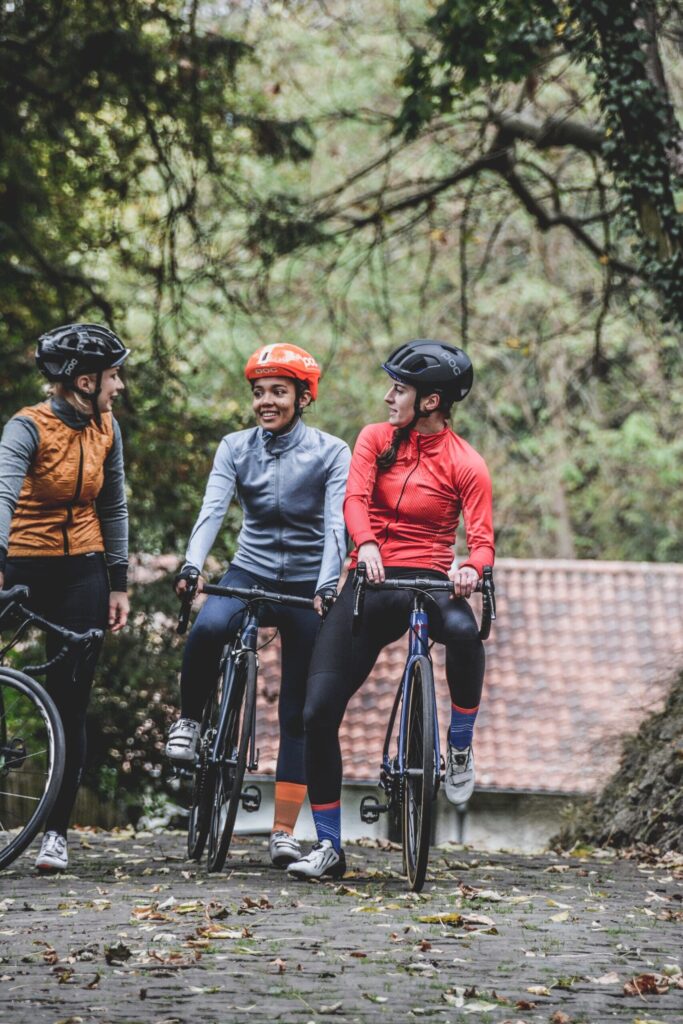
One of the key advantages of cycling is its adaptability to various fitness levels and physical abilities. Whether you’re a seasoned cyclist tackling challenging terrain or a beginner pedaling at a leisurely pace, cycling offers a customizable workout experience that can be tailored to suit your individual preferences and goals.
Indoor vs. Outdoor Cycling Options
When it comes to cycling, individuals have the option to choose between indoor and outdoor settings, each offering unique advantages and challenges.
Outdoor Cycling: Riding outdoors allows you to experience the thrill of exploration as you traverse scenic landscapes, rolling hills, and winding trails.
Outdoor cycling offers a refreshing dose of fresh air and sunlight, invigorating both the body and mind. Additionally, outdoor cycling provides opportunities for social interaction, whether joining group rides or simply sharing the road with fellow cyclists.
Indoor Cycling: Indoor cycling, also known as spinning, takes place in a controlled environment such as a gym or fitness studio.
Indoor cycling classes typically feature energetic music, motivating instructors, and immersive visual displays, creating a dynamic and engaging workout atmosphere. Indoor cycling offers the convenience of year-round accessibility, regardless of weather conditions, making it an ideal option for individuals seeking consistency in their fitness routine.
Whether you prefer the freedom of outdoor exploration or the intensity of indoor group classes, cycling offers a versatile and effective means of achieving your fitness goals.
Gear and Equipment Essentials
Regardless of whether you choose outdoor or indoor cycling, having the right gear and equipment is essential to ensure a safe and enjoyable experience. Here are some gear essentials for cycling:
- Bike: Select a bike that suits your riding style and preferences, whether it’s a road bike, mountain bike, or stationary indoor bike. Ensure that the bike is properly sized and adjusted to fit your body for optimal comfort and performance.
- Helmet: Protect your head with a well-fitted, safety-certified helmet whenever you ride outdoors. A helmet is essential for preventing head injuries in the event of a fall or collision.
- Apparel: Wear moisture-wicking clothing that provides ventilation and comfort during your ride. Consider investing in padded cycling shorts for added cushioning and support, especially for longer rides.
- Footwear: Choose cycling shoes with stiff soles that provide efficient power transfer and stability while pedaling. If using clipless pedals, ensure compatibility between your shoes and pedal system.
- Hydration and Nutrition: Stay hydrated by bringing a water bottle or hydration pack with you on your rides, especially during longer outings. Pack snacks or energy gels to fuel your rides and maintain energy levels.
By equipping yourself with the right gear and equipment, you can enjoy the benefits of cycling while minimizing the risk of injury and maximizing your performance. Whether you’re embarking on an outdoor adventure or joining a high-energy indoor cycling class, cycling offers an exhilarating and effective way to burn fat, improve cardiovascular health, and embrace the thrill of the ride.
3. Swimming
Swimming emerges as a quintessential aerobic exercise that offers a comprehensive full-body workout while minimizing stress on the joints.
Unlike high-impact activities such as running or jumping, swimming takes place in a buoyant, supportive environment, making it an ideal option for individuals seeking a low-impact yet highly effective form of exercise.
Engaging in swimming activates virtually every major muscle group in the body, including the arms, shoulders, back, core, and legs. The resistance provided by the water challenges muscles to work harder, leading to improvements in strength, endurance, and overall muscle tone. Additionally, swimming elevates the heart rate, promoting cardiovascular health and enhancing lung capacity.
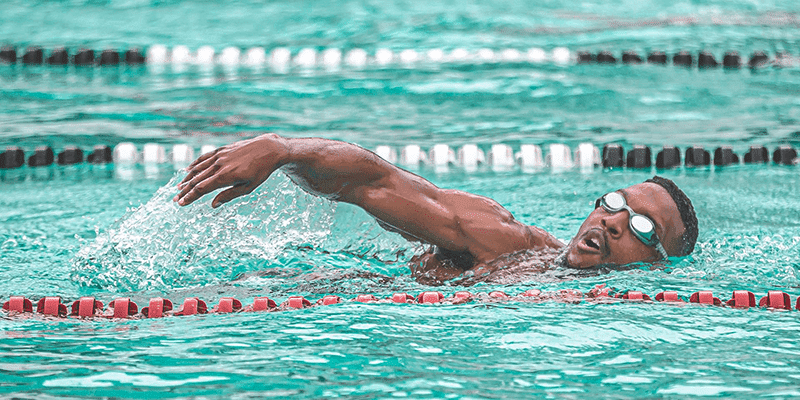
One of the key advantages of swimming is its ability to accommodate individuals of all fitness levels and physical abilities. Whether you’re a beginner learning basic strokes or an experienced swimmer tackling challenging workouts, swimming offers a customizable workout experience that can be tailored to suit your specific goals and preferences.
Different Swimming Strokes for Variety
Swimming offers a diverse array of strokes, each with its own unique benefits and characteristics. By incorporating different swimming strokes into your routine, you can add variety to your workouts while targeting different muscle groups and enhancing overall fitness. Here are some popular swimming strokes to consider:
- Freestyle: Also known as front crawl, freestyle is the fastest and most commonly used stroke in swimming. It involves alternating arm movements and flutter kicking while maintaining a streamlined body position.
- Backstroke: Backstroke involves swimming on your back while performing alternating arm movements and flutter kicking. This stroke provides an excellent workout for the back muscles and can help improve posture and spinal alignment.
- Breaststroke: Breaststroke is characterized by simultaneous arm movements followed by a frog-like kick. It offers a gentler, more rhythmic pace compared to other strokes and is ideal for beginners or individuals seeking a less intense workout.
- Butterfly: Butterfly is a challenging yet rewarding stroke that involves simultaneous arm movements accompanied by a dolphin kick. It requires coordination, strength, and flexibility and provides an intense full-body workout.
- Individual Medley (IM): IM combines all four swimming strokes—butterfly, backstroke, breaststroke, and freestyle—into one continuous race or workout. It offers a comprehensive test of swimming skill and endurance.
By incorporating a variety of swimming strokes into your routine, you can keep your workouts engaging and dynamic while reaping the unique benefits of each stroke.
Safety Precautions for Swimming
While swimming is generally considered a safe and enjoyable form of exercise, it’s essential to prioritize safety to prevent accidents and ensure a positive swimming experience. Here are some safety precautions to keep in mind:
Swim in Designated Areas: Choose swimming pools, lakes, or oceans that are designated for swimming and have lifeguards on duty, especially if you’re a beginner or swimming in open water.
Learn Basic Water Safety Skills: Familiarize yourself with basic water safety skills, such as floating, treading water, and proper breathing techniques, to ensure confidence and competence in the water.
Supervise Children: Always supervise children closely when they’re swimming and ensure they have appropriate flotation devices or swim aids if necessary.
Warm Up and Cool Down: Begin your swimming workouts with a gentle warm-up to prepare your muscles for activity and reduce the risk of injury. Similarly, conclude your workouts with a gradual cool-down to lower your heart rate and promote relaxation.
Stay Hydrated: Drink plenty of water before, during, and after your swimming sessions to stay hydrated, especially in warm or humid conditions.
Use Sun Protection: If swimming outdoors, apply waterproof sunscreen to protect your skin from harmful UV rays and wear sunglasses and a swim cap to shield your eyes and scalp.
By adhering to these safety precautions and guidelines, you can enjoy the countless benefits of swimming while minimizing the risk of injury and ensuring a safe and rewarding swimming experience.
Whether you’re seeking a low-impact workout, a refreshing escape from the heat, or simply a fun and invigorating activity, swimming offers something for everyone eager to dive into fitness.
4. Walking
Walking, often overlooked in favor of more intense forms of exercise, boasts surprising effectiveness for fat loss and overall health improvement.
Despite its simplicity, walking consistently at a brisk pace can lead to significant calorie expenditure and gradual weight loss.
Research indicates that brisk walking can elevate the heart rate sufficiently to engage the body’s fat-burning mechanisms, making it an accessible and sustainable option for individuals of all fitness levels.

Moreover, walking promotes adherence to an active lifestyle by being easy to integrate into daily routines.
Whether it’s a leisurely stroll through the neighborhood or a purposeful walk during lunch breaks, every step contributes to improved health and well-being. By harnessing the power of walking, individuals can achieve their weight loss goals while enjoying the numerous physical and mental benefits of regular physical activity.
Incorporating Brisk Walking into Daily Routine
Incorporating brisk walking into your daily routine requires minimal effort and yields substantial benefits for both physical and mental health. Here are some strategies for integrating brisk walking into your daily life:
- Morning Walks: Start your day with a brisk walk around your neighborhood or local park. Not only does this boost metabolism and energy levels, but it also sets a positive tone for the day ahead.
- Walking Commute: If feasible, consider walking or biking to work instead of driving or taking public transportation. This not only provides an opportunity for physical activity but also reduces carbon emissions and promotes environmental sustainability.
- Lunchtime Walks: Take advantage of your lunch break to go for a brisk walk outdoors. Invite coworkers to join you for a refreshing stroll and social interaction.
- Evening Strolls: Wind down in the evening with a leisurely stroll around your neighborhood or nearby scenic trails. Walking before bedtime can promote relaxation and improve sleep quality.
- Activity Breaks: Incorporate short walking breaks into your daily routine, such as taking the stairs instead of the elevator or pacing while talking on the phone. These small bursts of activity add up over time and contribute to overall calorie expenditure.
By prioritizing regular brisk walking as part of your daily routine, you can reap the myriad benefits of physical activity while seamlessly integrating exercise into your lifestyle.
Importance of Proper Footwear and Posture
While walking is a low-impact activity, proper footwear and posture are essential to prevent discomfort and minimize the risk of injury. Here’s why they’re important:
Footwear: Invest in supportive walking shoes that provide cushioning, stability, and arch support. Ill-fitting or worn-out shoes can lead to foot pain, blisters, and other discomforts. Visit a reputable shoe store to get properly fitted for walking shoes that suit your foot type and gait.
Posture: Maintain good posture while walking by keeping your head up, shoulders back, and core engaged. Avoid slouching or leaning forward, as this can strain your neck, shoulders, and lower back. Swing your arms naturally in sync with your stride to maximize momentum and calorie burn.
By prioritizing proper footwear and posture, you can enhance your walking experience and reduce the risk of injury, allowing you to enjoy the full benefits of this accessible and effective form of exercise.
In conclusion, walking emerges as a surprisingly effective strategy for fat loss and overall health improvement. By incorporating brisk walking into your daily routine and prioritizing proper footwear and posture, you can harness the power of this accessible form of exercise to achieve your fitness goals and enhance your well-being.
Whether it’s a leisurely stroll through the park or a purposeful walk to work, every step brings you closer to a healthier, happier you.
5. Jumping Rope
Jumping rope, often associated with childhood pastimes, emerges as a high-intensity calorie burner that offers remarkable benefits for cardiovascular health and fat loss. Despite its simplicity, jumping rope engages multiple muscle groups simultaneously, including the legs, core, arms, and shoulders, making it a highly effective full-body workout.
The rapid, repetitive motion of jumping rope elevates the heart rate quickly, leading to increased calorie expenditure and enhanced metabolism. Research suggests that just 10 minutes of jumping rope can burn as many calories as 30 minutes of jogging, making it an efficient and time-effective option for individuals seeking to maximize their calorie burn and achieve their fitness goals.

Moreover, jumping rope offers a dynamic and engaging workout experience that can be tailored to suit individual fitness levels and preferences. Whether you’re a beginner mastering basic jumps or an advanced athlete incorporating complex tricks and combinations, jumping rope provides a challenging yet rewarding cardiovascular workout that yields tangible results.
Techniques and Variations for All Fitness Levels
Jumping rope offers a diverse array of techniques and variations that cater to individuals of all fitness levels and abilities. Here are some techniques and variations to consider:
- Basic Jumps: Start with basic jumps, also known as two-footed jumps, where both feet leave the ground simultaneously with each rotation of the rope. Focus on maintaining a steady rhythm and landing softly on the balls of your feet to minimize impact.
- Single-Leg Jumps: Challenge yourself with single-leg jumps, where you alternate between jumping on one leg and the other. This variation improves balance, coordination, and lower body strength.
- Double-Unders: Master the double-under, a more advanced technique where the rope passes under your feet twice with each jump. Double-unders require precise timing and coordination but offer a highly effective calorie-burning workout.
- Cross Overs: Experiment with cross overs, where you cross your arms in front of your body as the rope passes under your feet. Cross overs engage the core and arms while adding a fun and dynamic element to your workout.
- High Knees: Incorporate high knees, where you lift your knees toward your chest with each jump, to increase intensity and elevate the heart rate further.
By incorporating a variety of techniques and variations into your jumping rope routine, you can keep your workouts engaging and challenging while targeting different muscle groups and enhancing overall fitness.
Precautions to Prevent Injury
While jumping rope offers numerous benefits, it’s essential to take precautions to prevent injury and ensure a safe and effective workout experience. Here are some precautions to keep in mind:
Use Proper Form: Maintain good posture and alignment while jumping rope, keeping your back straight, shoulders relaxed, and core engaged. Avoid excessive bending at the waist or rounding of the spine, as this can strain the lower back.
Choose the Right Rope: Select a jump rope that is appropriate for your height and skill level. Stand on the middle of the rope with one foot and ensure that the handles reach your armpits. A properly sized rope allows for smooth and efficient rotation without tripping or tangling.
Start Slowly: Begin with short intervals of jumping rope and gradually increase duration and intensity as your fitness improves. Listen to your body and stop if you experience pain or discomfort.
Land Softly: Land softly on the balls of your feet with each jump to minimize impact and reduce the risk of injury to the ankles, knees, and hips. Avoid landing with flat feet or excessive force.
Modify Intensity: Adjust the intensity of your jumps to suit your fitness level and abilities. Take breaks as needed and focus on maintaining proper form and technique throughout your workout.
By following these precautions and guidelines, you can enjoy the benefits of jumping rope while minimizing the risk of injury and maximizing the effectiveness of your workouts. Whether you’re seeking an intense calorie-burning session or a fun and challenging way to improve cardiovascular fitness, jumping rope offers a versatile and accessible option for individuals of all ages and fitness levels.
6. HIIT (High-Intensity Interval Training)
High-Intensity Interval Training (HIIT) has gained popularity in recent years for its remarkable efficiency in burning calories, improving cardiovascular health, and boosting overall fitness levels. HIIT involves alternating between short bursts of intense exercise and brief periods of rest or lower-intensity activity. This strategic approach to exercise challenges the body’s energy systems, leading to greater calorie burn, increased metabolism, and improved endurance.
One of the key benefits of HIIT is its time efficiency. HIIT workouts typically last between 10 to 30 minutes, making them ideal for individuals with busy schedules who seek maximum results in minimal time. Additionally, HIIT stimulates excess post-exercise oxygen consumption (EPOC), commonly referred to as the “afterburn effect,” which causes the body to continue burning calories at an elevated rate even after the workout is complete.
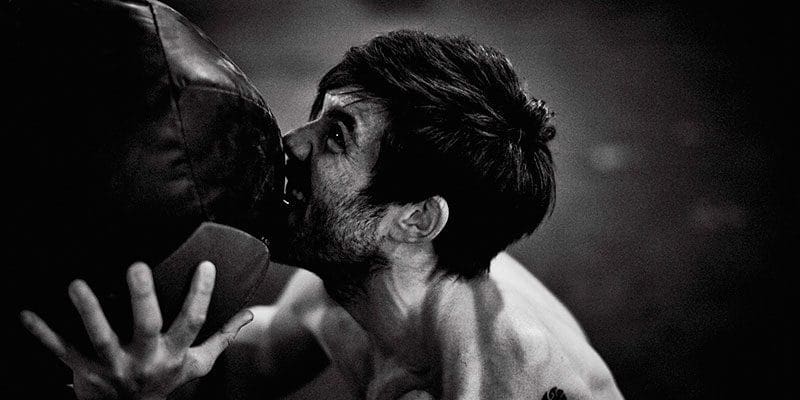 Source: Ryan Edy
Source: Ryan EdyMoreover, HIIT offers versatility and adaptability, allowing individuals to customize their workouts based on fitness level, goals, and preferences. Whether you’re performing bodyweight exercises, sprinting intervals, or using equipment such as kettlebells or battle ropes, HIIT can be tailored to suit individual needs while delivering unparalleled results.
Sample HIIT Workouts Incorporating Different Exercises
Here are two sample HIIT workouts incorporating a variety of exercises to target different muscle groups and energy systems:
Workout 1: Bodyweight HIIT Circuit
- Jump Squats (30 seconds): Start in a squat position, then explosively jump as high as possible, landing softly and immediately going into the next squat.
- Push-Ups (30 seconds): Perform as many push-ups as possible with proper form, engaging the chest, shoulders, and triceps.
- Mountain Climbers (30 seconds): Get into a plank position and alternate bringing each knee toward the chest in a running motion.
- Burpees (30 seconds): Begin in a standing position, then squat down, kick your feet back into a plank position, perform a push-up, jump your feet back to the squat position, and explosively jump upward.
- Rest (30 seconds): Take a brief rest before repeating the circuit for a total of 3-5 rounds.
Workout 2: Cardio HIIT Intervals
- Sprinting Intervals (20 seconds): Sprint at maximum effort for 20 seconds, aiming to cover as much distance as possible.
- Rest or Light Jogging (10 seconds): Recover with a light jog or walk for 10 seconds before starting the next sprint interval.
- Jumping Jacks (20 seconds): Perform jumping jacks at a fast pace, engaging the legs, arms, and cardiovascular system.
- Rest (10 seconds): Take a brief rest before moving on to the next exercise.
- High Knees (20 seconds): Drive your knees upward as fast as possible while maintaining good posture and form.
- Rest (10 seconds): Recover briefly before repeating the circuit for a total of 4-6 rounds.
Importance of Proper Warm-Up and Cool-Down
Before starting a HIIT workout, it’s crucial to perform a proper warm-up to prepare the body for the intense exercise ahead.
A dynamic warm-up consisting of dynamic stretches and mobility exercises helps increase blood flow to the muscles, improves flexibility, and reduces the risk of injury. Sample warm-up exercises include arm circles, leg swings, high knees, and jumping jacks.
Similarly, a cooldown period is essential for gradually bringing the heart rate down and aiding in recovery. A cooldown typically consists of light aerobic exercise followed by static stretches to lengthen and relax the muscles. This helps prevent muscle soreness, improves flexibility, and promotes relaxation and recovery.
In conclusion, HIIT offers a highly effective and time-efficient approach to exercise, delivering unparalleled benefits for fat loss, cardiovascular health, and overall fitness. By incorporating HIIT workouts into your fitness routine and prioritizing proper warm-up and cooldown protocols, you can maximize results while minimizing the risk of injury, ultimately propelling you closer to your health and fitness goals.
7. Rowing
Rowing is a highly effective form of exercise that provides a full-body workout while offering numerous cardiovascular benefits.
Unlike traditional cardio exercises that primarily target the lower body, such as running or cycling, rowing engages multiple muscle groups simultaneously, making it an efficient and time-effective option for improving overall fitness.
Rowing primarily targets the muscles of the legs, back, core, and arms, making it a comprehensive strength-building exercise. The leg drive initiates the rowing motion, engaging the quadriceps, hamstrings, and glutes, while the back, core, and arms work together to complete the stroke.
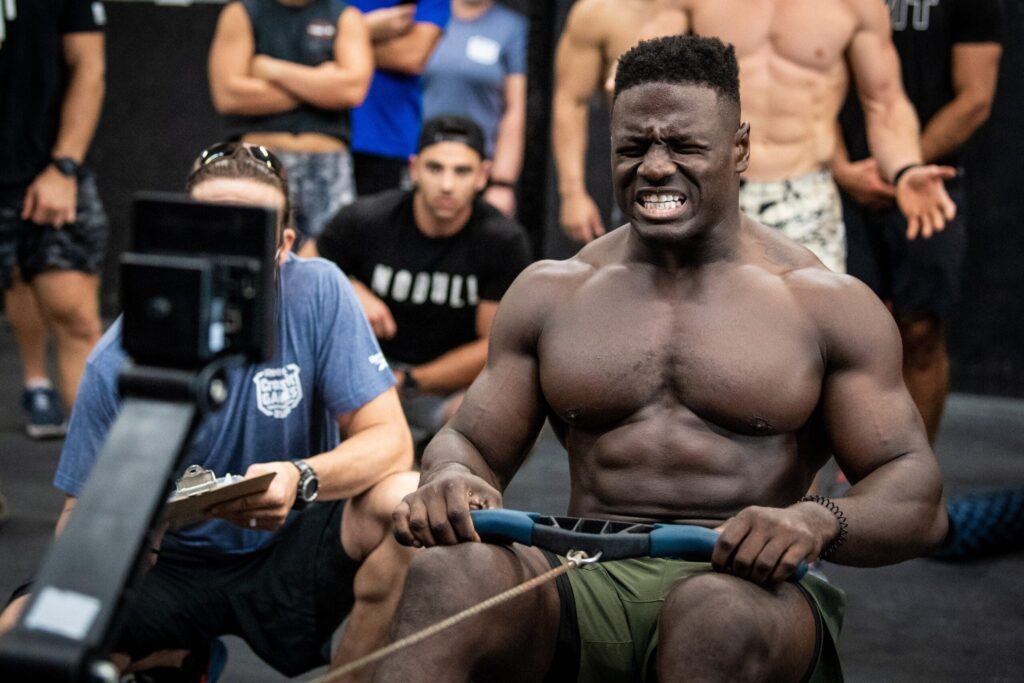 Source: Photo courtesy of CrossFit Inc.
Source: Photo courtesy of CrossFit Inc.Additionally, rowing promotes cardiovascular health by elevating the heart rate and increasing oxygen consumption, leading to improved endurance and stamina over time.
One of the key advantages of rowing is its low-impact nature, making it suitable for individuals of all ages and fitness levels. The smooth, fluid motion of rowing minimizes stress on the joints, making it an excellent option for individuals with joint pain or mobility issues.
Whether you’re looking to build strength, improve cardiovascular health, or burn calories, rowing offers a versatile and effective solution for achieving your fitness goals.
Proper Rowing Technique
Achieving proper rowing technique is essential to maximize the benefits of this full-body exercise while minimizing the risk of injury. Here are the key components of proper rowing technique:
- Starting Position: Begin by sitting on the rowing machine with your feet securely strapped into the footplates. Grab the handle with an overhand grip, keeping your arms extended and shoulders relaxed. Your knees should be bent, and your shins should be vertical.
- The Drive: Initiate the rowing motion by pushing through your legs, driving them down and away from the body. As you extend your legs, lean back slightly from the hips while keeping your core engaged and back straight.
- The Finish: Once your legs are fully extended, engage your back and arms to pull the handle toward your lower chest, just below your ribs. Keep your elbows close to your body and wrists flat throughout the movement.
- The Recovery: Reverse the motion by extending your arms forward, leaning your upper body slightly forward from the hips, and bending your knees to slide back to the starting position. Maintain a smooth, controlled motion throughout the recovery phase.
- Breathing: Exhale as you drive through the legs and pull the handle toward your body during the drive phase. Inhale as you extend your arms forward and slide back to the starting position during the recovery phase.
By mastering proper rowing technique, you can maximize the efficiency and effectiveness of your workouts while reducing the risk of injury.
Choosing the Right Rowing Machine
When selecting a rowing machine, also known as a rower or ergometer, it’s essential to consider factors such as resistance type, size, and features to ensure a comfortable and enjoyable workout experience. Here are some considerations for choosing the right rowing machine:
Resistance Type: Rowing machines typically utilize one of four resistance types: air, water, magnetic, or hydraulic. Each type offers unique advantages in terms of resistance levels, noise level, and overall feel. Air and water rowers provide dynamic resistance that adjusts based on your effort, while magnetic and hydraulic rowers offer adjustable resistance settings.
Size and Space: Consider the size and footprint of the rowing machine, especially if you have limited space in your home gym or workout area. Look for compact, space-saving designs that can be easily stored or folded when not in use.
Features and Functions: Evaluate the features and functions offered by the rowing machine, such as built-in workout programs, performance tracking, and adjustable settings. Choose a rower with intuitive controls and user-friendly interfaces to enhance your workout experience.
Comfort and Durability: Prioritize comfort and durability when selecting a rowing machine. Look for ergonomically designed seats, adjustable footrests, and padded handles to ensure a comfortable and secure fit during your workouts. Additionally, opt for rowers made from high-quality materials that are built to withstand regular use and provide long-lasting durability.
By considering these factors and choosing a rowing machine that aligns with your preferences and fitness goals, you can enjoy the benefits of rowing in the comfort of your own home.
In conclusion, rowing offers a highly effective and efficient full-body workout that promotes strength, cardiovascular health, and overall fitness. By mastering proper rowing technique and selecting the right rowing machine, you can maximize the benefits of this versatile exercise and take your fitness to new heights.
Whether you’re a beginner looking to build strength or an experienced athlete seeking to improve endurance, rowing offers a challenging yet rewarding workout experience for individuals of all ages and fitness levels.
8. Dancing
Dancing isn’t just a form of entertainment; it’s also a fantastic aerobic exercise that offers numerous physical and mental health benefits.
Whether you’re grooving to the rhythm of your favorite song in the comfort of your own home or participating in a high-energy dance class, dancing provides a fun and effective way to elevate your heart rate, burn calories, and improve cardiovascular health.
Dancing engages multiple muscle groups throughout the body, including the legs, core, arms, and back, making it a comprehensive full-body workout. The dynamic movements and rhythmic patterns of dance routines help strengthen muscles, improve flexibility, and enhance coordination and balance. Additionally, dancing stimulates the release of endorphins, neurotransmitters that promote feelings of happiness and reduce stress, making it a mood-boosting activity that leaves you feeling energized and rejuvenated.
One of the key advantages of dancing is its accessibility and inclusivity. Regardless of age, fitness level, or prior experience, anyone can enjoy the benefits of dancing. Whether you’re a seasoned dancer or a complete beginner, there’s a dance style and routine out there for you. So put on your favorite music, let loose, and dance your way to better health and happiness.
Different Dance Styles for All Preferences
Dancing encompasses a wide range of styles and genres, each offering its own unique flair and appeal. From high-energy Latin dances to graceful ballet movements, there’s a dance style to suit every preference and personality. Here are some popular dance styles to consider:
- Hip-Hop: Known for its expressive movements, hip-hop dance encompasses a variety of styles, including popping, locking, and breaking. Hip-hop dance routines often feature dynamic choreography set to upbeat music, making them perfect for dancers looking to unleash their creativity and individuality.
- Ballet: Ballet is a classical dance form characterized by precise and graceful movements, intricate footwork, and elegant arm positions. Ballet classes focus on developing strength, flexibility, and proper technique while instilling discipline and poise in dancers of all ages.
- Salsa: Originating in Latin America, salsa is a lively and passionate dance style characterized by rhythmic hip movements and intricate footwork. Salsa dance routines typically involve partner work and improvisation, creating a dynamic and interactive dance experience.
- Ballroom: Ballroom dancing encompasses a variety of partner dances, including the waltz, foxtrot, tango, and cha-cha. Ballroom dance classes focus on teaching proper posture, frame, and technique while fostering teamwork and communication between partners.
- Zumba: Zumba is a high-energy dance fitness program inspired by Latin dance styles, such as salsa, merengue, and reggaeton. Zumba classes feature easy-to-follow choreography set to upbeat music, making them a fun and effective way to burn calories and improve cardiovascular health.
Whether you prefer hip-hop or the elegant movements of classical ballet, there’s a dance style out there for everyone to enjoy.
Joining Dance Classes or Using Online Tutorials
If you’re interested in exploring the world of dance further, consider joining dance classes or utilizing online tutorials to learn new dance styles and techniques. Dance classes offer a structured and supportive environment where you can learn from experienced instructors and connect with fellow dancers who share your passion for movement and expression.
Alternatively, online dance tutorials provide a convenient and flexible way to learn at your own pace from the comfort of your home. Many dance studios and instructors offer online classes and tutorials covering a wide range of dance styles and skill levels, allowing you to explore new styles, refine your technique, and stay active wherever you are.
Whether you prefer the camaraderie of a group class or the convenience of online learning, dancing offers a rewarding and enjoyable way to stay fit, express yourself creatively, and connect with others who share your love of movement and music.
In conclusion, dancing is more than just a form of entertainment; it’s a fun and effective aerobic exercise that offers numerous physical and mental health benefits. By exploring different dance styles, joining dance classes, or using online tutorials, you can unleash your inner dancer, improve your fitness, and enhance your overall well-being. So put on your dancing shoes, turn up the music, and let the rhythm move you to a healthier, happier you.
9. Kickboxing
Kickboxing is a dynamic and high-energy martial art that seamlessly combines elements of cardio exercise with strength training, offering a comprehensive full-body workout. This popular fitness activity engages multiple muscle groups simultaneously, including the legs, core, arms, and shoulders, making it an effective way to build strength, improve cardiovascular health, and enhance overall fitness.
During a kickboxing workout, participants perform a series of punches, kicks, knee strikes, and defensive maneuvers, all while maintaining constant movement and intensity. This continuous movement elevates the heart rate, leading to increased calorie burn and improved endurance. Additionally, the explosive nature of kickboxing movements builds muscular strength and power, helping to tone and sculpt the body.
 Source: Johann Walter Bantz on Unsplash
Source: Johann Walter Bantz on UnsplashOne of the key benefits of kickboxing is its versatility and adaptability to different fitness levels and goals. Whether you’re a beginner looking to improve fitness or an experienced athlete seeking to enhance performance, kickboxing offers a challenging yet accessible workout that can be tailored to suit individual needs and preferences.
Basic Kickboxing Moves for Beginners
For beginners, mastering the basic kickboxing moves is essential to ensure proper technique and maximize the effectiveness of your workout. Here are some fundamental kickboxing moves to get you started:
- Jab: Start with a basic jab, which involves extending your lead hand (left hand for orthodox stance, right hand for southpaw stance) straight out in front of you, keeping your elbow slightly bent. Rotate your wrist so that your palm faces downward upon impact.
- Cross: Follow up the jab with a cross, which involves extending your rear hand (right hand for orthodox stance, left hand for southpaw stance) straight out in front of you, while pivoting your back foot and rotating your hips to generate power. Aim to punch straight toward your target, with your palm facing downward upon impact.
- Front Kick: Perform a front kick by lifting your knee toward your chest, then extending your leg forward in a kicking motion, striking with the ball of your foot. Keep your toes flexed and aim to make contact with the top of your foot or shin.
- Roundhouse Kick: Execute a roundhouse kick by pivoting on your lead foot and rotating your hips while extending your rear leg in a circular motion toward your target. Strike with the instep or lower shin, aiming to make contact with the side of your opponent’s body or head.
- Hook: Perform a hook by bending your elbow and bringing your lead arm across your body in a horizontal arc, aiming to make contact with the side of your opponent’s head or body. Pivot on your lead foot and rotate your hips to generate power.
Practice these basic kickboxing moves slowly and with proper form, focusing on technique and accuracy. As you become more comfortable with the movements, gradually increase speed and intensity to elevate the challenge of your workouts.
Safety Precautions and Equipment Needed
While kickboxing offers numerous benefits, it’s essential to prioritize safety to prevent injury and ensure a positive workout experience. Here are some safety precautions and equipment needed for kickboxing:
- Hand Wraps and Gloves: Invest in hand wraps and gloves to protect your hands and wrists during kickboxing workouts. Hand wraps provide support and stability to the wrists, while gloves cushion the impact of punches and reduce the risk of hand injuries.
- Proper Footwear: Wear supportive athletic shoes with good traction to provide stability and minimize the risk of slipping or injury during kickboxing workouts.
- Warm-Up and Cool-Down: Prioritize a proper warm-up before starting your kickboxing workout to prepare your muscles and joints for activity. Incorporate dynamic stretches and mobility exercises to increase blood flow and flexibility. Similarly, conclude your workout with a cool-down to lower your heart rate and promote recovery, incorporating static stretches to lengthen and relax the muscles.
- Hydration: Stay hydrated before, during, and after your kickboxing workout by drinking plenty of water. Dehydration can impair performance and increase the risk of fatigue and injury, so it’s essential to replenish fluids regularly.
- Listen to Your Body: Pay attention to your body’s signals during kickboxing workouts and modify exercises or take breaks as needed. Avoid pushing yourself too hard or performing movements that cause pain or discomfort.
By adhering to these safety precautions and using proper equipment, you can enjoy the benefits of kickboxing while minimizing the risk of injury and maximizing the effectiveness of your workouts.
In conclusion, kickboxing offers a dynamic and challenging workout that combines cardio exercise with strength training, providing numerous physical and mental health benefits.
By mastering basic kickboxing moves, prioritizing safety precautions, and using proper equipment, you can enjoy a fun and effective workout experience that boosts fitness, builds strength, and enhances overall well-being. Whether you’re looking to improve cardiovascular health, build muscle, or relieve stress, kickboxing offers a versatile and rewarding fitness option for individuals of all ages and fitness levels.
10. Stair Climbing
Stair climbing is a highly effective exercise that targets the lower body muscles while simultaneously burning calories and improving cardiovascular health. Whether you’re climbing stairs indoors or outdoors, this simple yet challenging activity engages major muscle groups such as the quadriceps, hamstrings, glutes, and calves, making it an excellent way to strengthen and tone the lower body.
One of the key advantages of stair climbing is its ability to provide a high-intensity workout in a short amount of time.
The vertical movement of stair climbing requires greater exertion compared to walking or running on flat ground, leading to increased calorie burn and improved cardiovascular endurance. Research has shown that stair climbing can burn more calories per minute than other forms of aerobic exercise, making it a time-efficient option for individuals seeking to maximize their workout efficiency.
 Source: CrossFit Zeeburg
Source: CrossFit ZeeburgAdditionally, stair climbing offers functional fitness benefits by improving balance, coordination, and agility. The repetitive nature of stair climbing helps build muscular endurance and stamina, allowing individuals to perform daily activities with greater ease and efficiency. Whether you’re climbing stairs for fitness or as part of your daily routine, this versatile exercise offers a range of benefits for both body and mind.
Incorporating Stair Climbing into Daily Routines
Incorporating stair climbing into your daily routine is a simple and practical way to increase physical activity and reap the benefits of this effective exercise. Here are some strategies for integrating stair climbing into your daily life:
- Take the Stairs: Opt for the stairs instead of the elevator or escalator whenever possible, whether you’re at work, shopping, or running errands. Climbing stairs throughout the day adds up to a significant amount of physical activity and calorie burn.
- Stair Climbing Workouts: Dedicate specific time slots for stair climbing workouts, either indoors using a staircase or outdoors at a nearby stadium or hill. Start with a manageable number of flights or repetitions and gradually increase intensity and duration as your fitness improves.
- Stair Climbing Challenges: Set personal goals or challenges to keep yourself motivated and engaged with stair climbing. Challenge yourself to climb a certain number of stairs per day or week, or participate in stair climbing events or competitions in your community.
- Interval Training: Incorporate stair climbing into your interval training workouts to add variety and intensity. Alternate between climbing stairs at a moderate pace and taking brief recovery breaks or performing other exercises such as bodyweight squats or lunges.
By integrating stair climbing into your daily routine and fitness regimen, you can enjoy the numerous benefits of this simple yet effective exercise while enhancing your overall health and well-being.
Safety Tips for Stair Climbing
While stair climbing offers numerous benefits, it’s essential to prioritize safety to prevent accidents and injuries. Here are some safety tips to keep in mind:
Warm-Up and Cool-Down: Begin your stair climbing workout with a gentle warm-up to prepare your muscles and joints for activity. Perform dynamic stretches and mobility exercises to increase blood flow and flexibility. Similarly, conclude your workout with a cool-down to lower your heart rate and promote recovery, incorporating static stretches to lengthen and relax the muscles.
Use Proper Footwear: Wear supportive athletic shoes with good traction to provide stability and minimize the risk of slipping or injury during stair climbing workouts. Avoid wearing shoes with worn-out soles or inadequate support, as they can increase the risk of falls or accidents.
Maintain Good Posture: Maintain proper posture while climbing stairs by keeping your back straight, shoulders relaxed, and core engaged. Use handrails for support if needed, but avoid leaning too heavily on them, as this can strain the wrists and shoulders.
Start Slowly: If you’re new to stair climbing or returning after a break, start slowly and gradually increase intensity and duration over time. Listen to your body and take breaks as needed to avoid overexertion or fatigue.
Stay Hydrated: Drink plenty of water before, during, and after your stair climbing workouts to stay hydrated and prevent dehydration. Avoid caffeine or alcohol before exercising, as they can contribute to dehydration and impair performance.
By following these safety tips and guidelines, you can enjoy the benefits of stair climbing while minimizing the risk of injury and ensuring a safe and effective workout experience. Whether you’re climbing stairs for fitness or as part of your daily routine, this versatile exercise offers a challenging yet rewarding way to improve strength, endurance, and overall health.
Learn More
Unbelievably Effective Science-Backed Arm Exercises You’ve Never Seen Before
The Diet that Will Transform Your Body in 100 Days
What Happens to Your Body When You Try the Anti-Ageing Diet for 90 Days?
The Ozempic Problem – The Literal Easiest Way to Lose Fat
Try This Effective 200 Reps Workout for Your Biceps
Conclusion
Throughout this article, we’ve explored a variety of aerobic exercises that not only torch body fat but also contribute to overall longevity and well-being.
From running and cycling to swimming and dancing, each of these exercises offers unique benefits for improving cardiovascular health, burning calories, and enhancing physical fitness. Aerobic exercise has been shown to boost metabolism, reduce the risk of chronic diseases such as heart disease and diabetes, and improve mood and mental health.
Incorporating these fun and diverse aerobic exercises into your fitness routine can help you achieve your weight loss and fitness goals while enjoying the process.
Whether you prefer the intensity of high-intensity interval training (HIIT), the grace of ballet, or the exhilaration of kickboxing, there’s an aerobic exercise for everyone. By finding activities that you enjoy and look forward to, you’re more likely to stick to your fitness routine and maintain long-term success.
Consistency is key when it comes to achieving and maintaining fitness goals. While it’s essential to challenge yourself and push beyond your comfort zone, it’s equally important to find activities that you genuinely enjoy and that fit your lifestyle.
Whether it’s dancing to your favorite music, cycling through scenic routes, or simply taking the stairs instead of the elevator, every bit of movement counts toward a healthier, happier you. Remember that fitness is not just about reaching a certain number on the scale or fitting into a specific size; it’s about feeling strong, confident, and empowered in your body.
As you embark on your fitness journey, prioritize consistency, listen to your body, and celebrate your progress along the way.
Embrace the variety and excitement of aerobic exercise, and remember that fitness is a lifelong journey that should be enjoyable and sustainable.
By making exercise a fun and integral part of your daily routine, you’ll not only achieve your fitness goals but also enhance your overall quality of life.
So lace up your sneakers, turn up the music, and get ready to unleash your inner athlete. Your health and happiness await!
Source link: https://www.boxrox.com/10-dynamic-types-of-aerobic-exercise-that-melt-body-fat-and-boost-your-lifespan/ by BOXROX at www.boxrox.com

